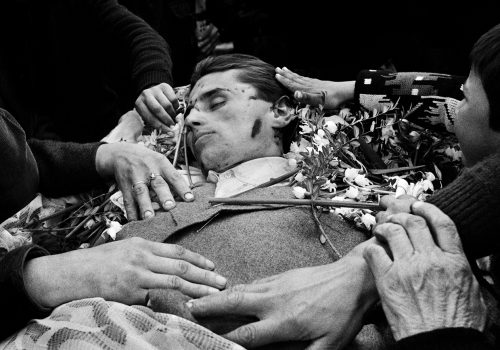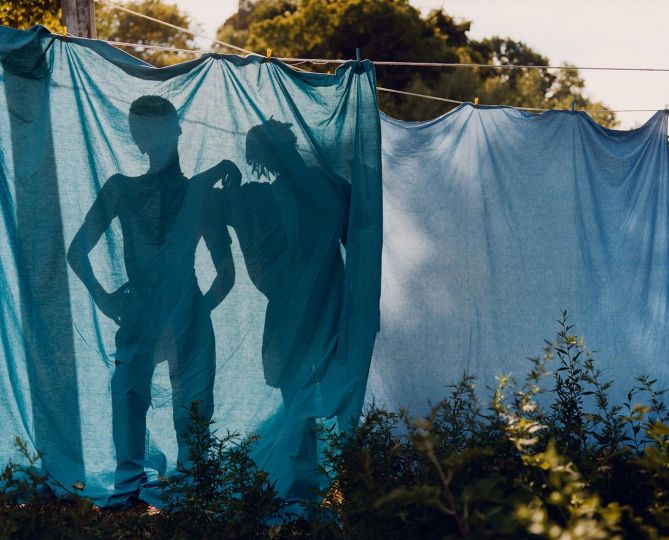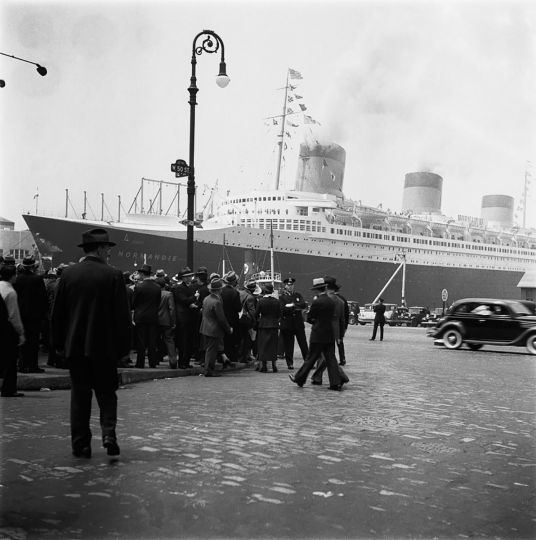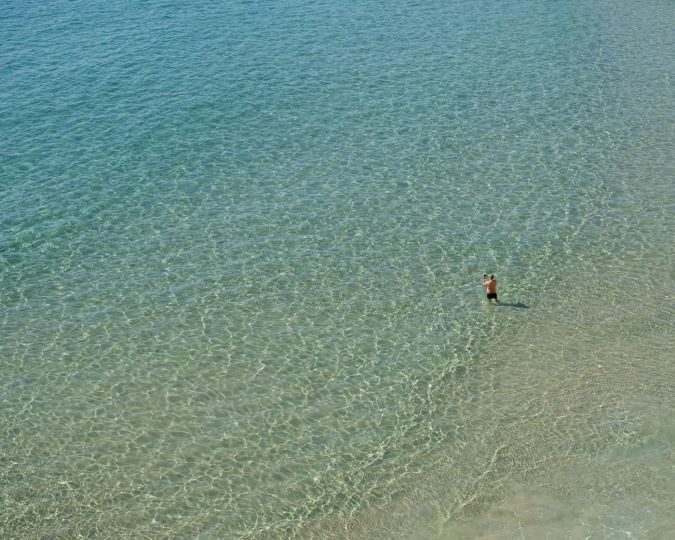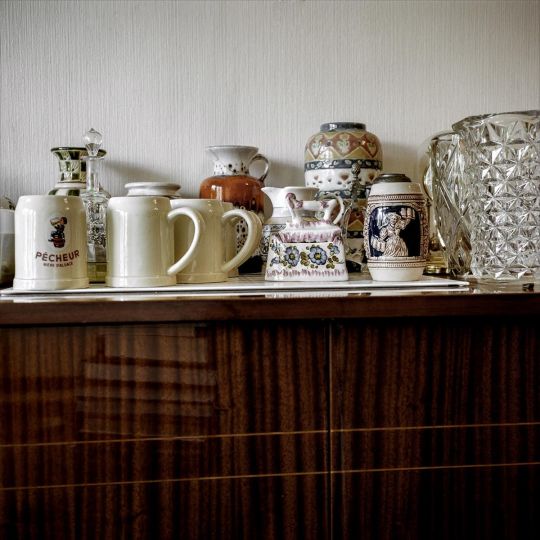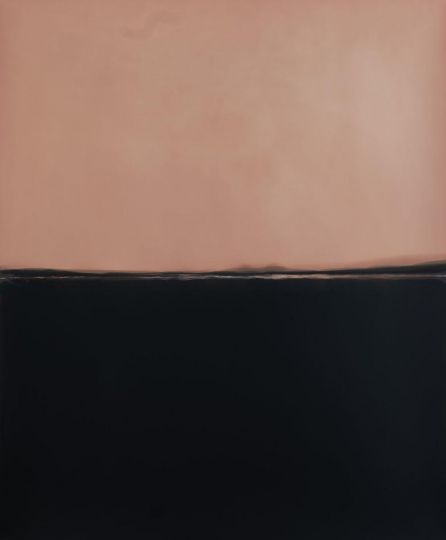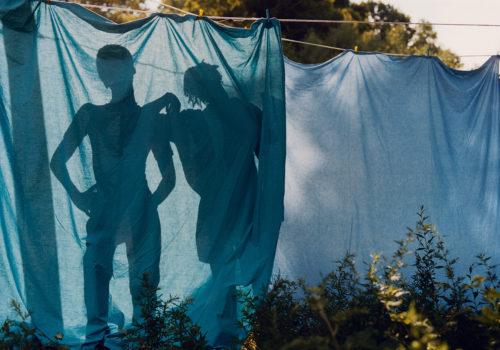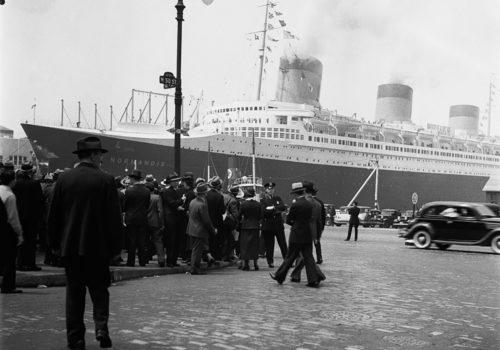Written by Sean Sheehan
Everyone Waiting for Godot
‘When we get out of the glass bottle of our ego and when we escape like the squirrels in the cage of our personality and get into the forest again, we shall shiver with cold and fright.’ D H Lawrence’s scary remark might be read as a warning to keep out of such forests in the mind but if Fabio Ponzio heard it the effect only stirred up an impulse to embrace the risk and travel that unknown road.
No armchair traveller, this was what he did in 1987. At that time, for a European photographer, a destination geographically close at hand – eastern Europe – was suitably unknown. Ponzio’s professional life was unfulfilling – his last assignment was photographing ‘a tycoon of the car industry for the cover of the American magazine Newsweek’ – and doing something different became compelling. But wanderlust was at odds with his private life and, as he says, ‘I paid the consequences’. He would spend the next twenty-two years travelling behind the Iron Curtain, territory he describes as ‘the unconscious mind of Europe’.
East of Nowhere, a selection of the photographs taken on his odysseys, before and after the implosion of the USSR, reflects his own mindset as much as the condition of the countries he travelled through. One of the pictures, a copy of which is pressed in to the book’s cover, shows a car with two sheep in the back seat but any suggestion this may give of the genial and whimsical is misleading. The car is driverless, one of the animals stares out towards the camera and the road is otherwise empty. ‘I began to identify my own defeats with those of the people of the East’, he says, and this empathy helps account for the abiding sense of loss and irremediable absence pervading his photographs.
Given the economic precariousness of life as the USSR tottered towards dissolution and then collapsed, tout court, human figures expressing stoical resignation should come as no surprise in these pictures. But the sense that the metaphysics are mordant, that something is rotten in the state of eastern Europe. goes all the way down. The cumulative effect is the impression of cultural arrest and an existential malaise. There is only one photograph taken in East Germany, posing speculation about what might have made that country different to its neighbours.
Bereavement is in the air and scenes touching on death – literally in the photograph of the hands of adults and a child reaching out to a body in an open coffin (Romania 1992) – are not uncommon, as if mourning is a way of life. Allied to this is what feels like a cult of mortification: penitents kneel on open land in the rain or in a church, beseeching forgiveness; drunks lay comatose on a pavement, road or hallway, like parodies of corpses. Ponzio’s eye is also drawn to sober bodies on the ground, asleep or resting, and he photographs people standing about in varying states of entropy. Everyone, it seems, is waiting for Godot.
Ponzio chose to work in black and white: ‘two colours that allow you to more clearly trace the symbolic aspect of a deeper reality. Black is central in the image; time hides in its folds; in its unexplored areas the mystery is hidden.’ In the final photograph in East of Nowhere two girls stand before a painted landscape on a sheet. As in the book’s front cover, there is a road waiting to be travelled but this time the symbolism is more overt: the two girls, fraternal twins perhaps, have a shared future ahead of them: the road is empty and it heads into a forest that awaits – hopefully not the one that D. H. Lawrence wrote about…
Sean Sheehan
Fabio Ponzio : East of Nowhere
Preface by Herta Müller
Published by Thames & Hudson
Format: Hardcover
Pages: 156
Artwork: 80 black-and-white illustrations
Size: 8.8 in x 11.3 in x 0.9 in
Published: May 5th, 2020
ISBN-10: 0500545200
ISBN-13: 9780500545201
https://www.thamesandhudsonusa.com/

